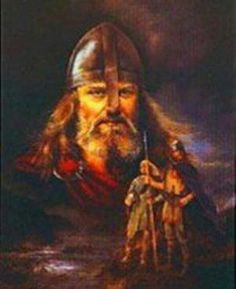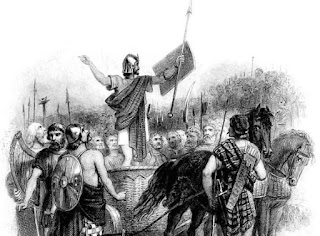The Lost Battle
The Lost Battle
Many theories exist over the venue for the Battle of Mons Graupius, but none is conclusive. More than a dozen places are rumoured to be the correct site—the more imaginative include the Gleneagles golf courses and the vicinity of Culloden.
The name of the battle implies an isolated or at least distinctive hill, in other words, not the whole range of the Mounth.
In the first printed edition of Tacitus's work, in 1480, a printer's error caused Graupius to appear as Grampius, which means the region Grampian took its name from a 15th-century spelling mistake. Grampian Mountains link
The very detailed description by Tacitus of the battle gives some clues regarding the lie of the land. The hill itself must have had a concave and rather steep slope. There was an open place for the Roman camp and a plain beside it, with wooded hills nearby and a Caledonian settlement within view.
Serious contenders for the site include:
● Duncrub near Dunning in Perthshire—may contain a linguistic echo of Graupius and there is a Roman camp nearby, but it seems rather too far south.
• Raedykes, just north of Stonehaven - Roman camp and a strategic location but doesn't fit the description of the topography.
● Knock Hill, Pass of Grange, north of Huntly—a strategic location near the most northerly marching camps.
Bennachie, by Inverurie – perhaps the strongest contender. The great Roman fort of Durno is nearby, and there are impressive native fortifications on the top of the hill.
The topography fits well, and it is a location of great symbolic importance. Ritual monuments in the vicinity stretch back to the Neolithic and forward into the Pictish periods.
...but what do you think? Any other ideas? There are no wrong answers...











Comments
Post a Comment